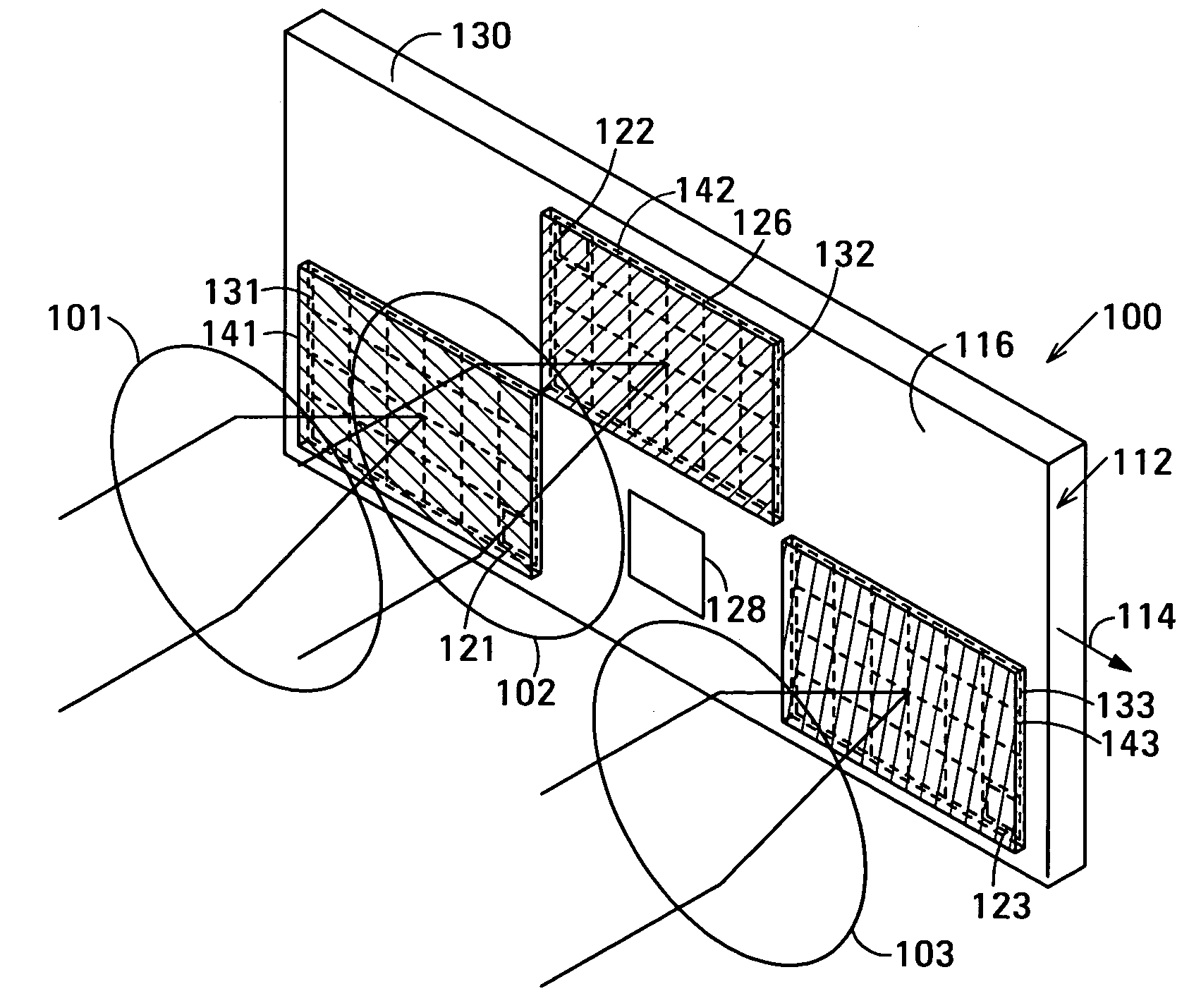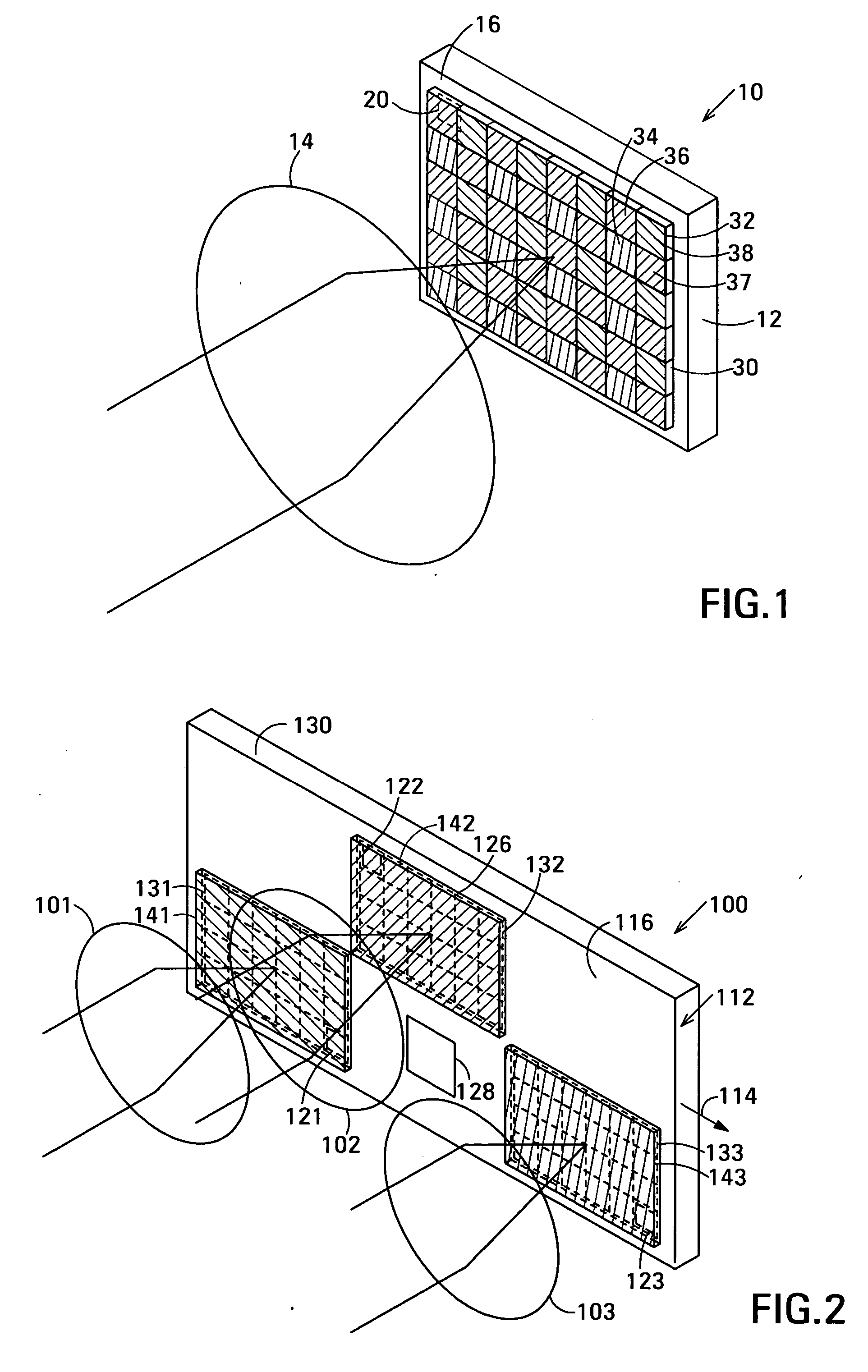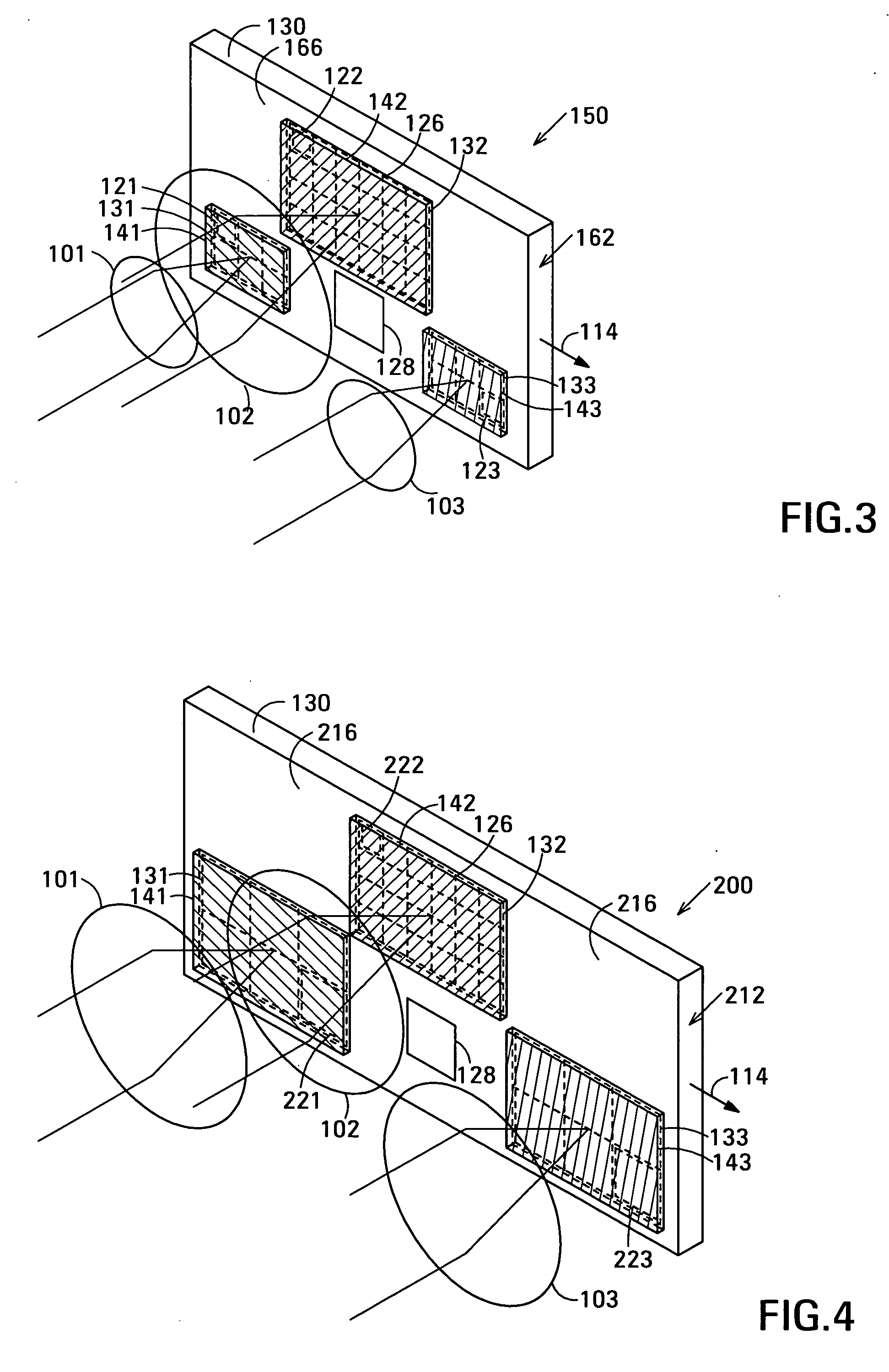Color image sensor with imaging elements imaging on respective regions of sensor elements
a color image sensor and imaging element technology, applied in the field of color image sensors with imaging elements, can solve the problems of many problems with certain types of subjects, false colors, and market pressure to reduce the size of the sensor, and achieve the effect of reducing the area of each region of the light sensor, reducing the size of the sensor, and speeding up the read-out tim
- Summary
- Abstract
- Description
- Claims
- Application Information
AI Technical Summary
Benefits of technology
Problems solved by technology
Method used
Image
Examples
Embodiment Construction
[0035]FIG. 2 is an isometric view of a highly simplified first embodiment 100 of a color image sensor in accordance with the invention. Color image sensor 100 generates a color image signal representing a subject and is composed of a light sensor 112 and imaging elements shown schematically at 101, 102 and 103. Light sensor 112 has sensor elements arranged on its major surface 116. In operation, the light sensor generates a color image signal 114 in response to light incident on major surface 116. Imaging elements 101, 102 and 103 are arranged to form images of the subject in light of different colors on respective regions 131, 132 and 133 of light sensor 112. The regions of the light sensor on which the images are formed are substantially spatially separated to prevent light leakage among the images.
[0036] In color image sensor 100, the sensor elements are arranged in an irregular array in which each of regions 131, 132 and 133 is composed of a rectangular array of sensor elements...
PUM
 Login to View More
Login to View More Abstract
Description
Claims
Application Information
 Login to View More
Login to View More - R&D
- Intellectual Property
- Life Sciences
- Materials
- Tech Scout
- Unparalleled Data Quality
- Higher Quality Content
- 60% Fewer Hallucinations
Browse by: Latest US Patents, China's latest patents, Technical Efficacy Thesaurus, Application Domain, Technology Topic, Popular Technical Reports.
© 2025 PatSnap. All rights reserved.Legal|Privacy policy|Modern Slavery Act Transparency Statement|Sitemap|About US| Contact US: help@patsnap.com



